Dale DeGroff
They don’t call him “King Cocktail” for nothing. Master mixologist Dale DeGroff is best known for his time at the Rainbow Room in New Yorks’ Rockefeller Center from 1987 to 1999. His work there inspired legions of bartenders to return to the craft of the cocktail: simple, classic recipes and fresh ingredients.
DeGroff’s inspiration was New York restaurateur Joe Baum, whom he met in the late 1960s when Baum’s company, Restaurant Associates, was a client of the advertising agency that DeGroff worked for. Baum’s restaurants have included La Fonda Del Sol, Tavern on the Green and The Four Seasons, as well as several themed concepts.
After stints at a few other New York bars and a gig at the Hotel Bel Air in Los Angles, in 1985 DeGroff went to work for Baum, first at Aurora in New York, then at the Rainbow Room, which reopened in 1987 after a two-year, $25 million renovation. Baum insisted on authenticity with the beverage programs—fresh juices, real simple syrup, and sour mix—and he directed DeGroff to consult Jerry Thomas’s 1862 book How to Mix Drinks to learn more about the classics.
DeGroff put together a menu of unique and vintage cocktails, which combined with the Rainbow Room’s sophisticated atmosphere and painstaking attention to detail and service, made it the place to be. Not that all the drinks had to be retro and refined: “We sold a lot of Long Island Iced Teas at the Rainbow Room,” he notes.
Author of Craft of the Cocktail and The Essential Cocktail, DeGroff has consulted on cocktail programs around the world. He is a partner in bar training program Beverage Alcohol Resource (BAR), along with fellow key influencers Doug Frost, Steven Olson, F. Paul Pacult, Andy Seymour and David Wondrich. And he’s the founder of The Museum of the American Cocktail, which in 2013 became part of the Southern Food and Beverage Institute. The museum will soon reopen in its new location inside the Southern Food and Beverage Museum in New Orleans.
In addition to reviving many long-forgotten classic recipes, DeGroff also invented several new drinks that have become mainstays on today’s cocktail menus, such as The Ritz.
What’s more, numerous star mixologists today consider DeGroff a mentor. For instance, he trained some of the staff at Pravda, a Russian-inspired New York speakeasy opened by Keith McNally in 1995; several of those folks went on to open Employees Only in 2004.
What does King Cocktail think about the future of mixology? “I see a maturing on the beverage side,” and a move to simplicity behind the bar, DeGroff says. “There’s a lot of being creative for the sake of being creative.”
Bartenders today are more skilled than ever, he notes, with access to information, spirits and fresh, local ingredients—options that people working behind the bar 25 years ago didn’t have. “I see a continued move to simple, honest ingredients,” DeGroff says.
Tony Abou-Ganim
A bartender since 1980, Abou-Ganim was working behind the stick in New York while pursuing an acting career in the early 1990s. He has credited a 1993 meeting with Dale DeGroff at the Rainbow Room with changing the way he viewed and did his job. After moving to San Francisco, Abou-Ganim worked at Harry Denton’s Starlight Room atop the Sir Francis Drake Hotel, where he created a specialty cocktail menu and developed several signature recipes.
Hotelier Steve Wynn hired him in 1998 to set up and run the 22 bars in the Bellagio. Abou-Ganim spent five years at the Las Vegas casino, introducing then-novel concepts such as fresh ingredients and classic recipes. He helped usher in the craft cocktail movement to Las Vegas, where Abou-Ganim (aka the Modern Mixologist) today runs a beverage consulting business. He’s also the author of The Modern Mixologist: Contemporary Classic Cocktails and Vodka Distilled.
Audrey Saunders
When Saunders opened Pegu Club in 2005, she took the already thriving New York cocktail scene to a new level. Named for a British officers’ club in Rangoon (and a cocktail), the elegant Pegu Club stood out at the time as a sophisticated, gin-centric spot. The cocktails were crafted with fresh juice, herbs, house-made bitters, and simple syrup, and served with ample ice cubes in small glasses. Saunders has developed several cocktail recipes that have become new classics, such as the Gin Gin Mule and the Fitty-Fitty cocktail, to name just two.
Saunders is one of the many who credit Dale DeGroff with upping her game. After taking a seminar with him in 1996, she offered to work for him for free to better hone her craft. She worked for DeGroff at Blackbird in New York and later did stints at Beacon, The Tonic and The Carlyle’s Bemelmans Bar before opening Pegu Club. The many bartenders Saunders has mentored include Jim Meehan, Kenta Goto, Naren Young and Toby Maloney.
Gary “gaz” Regan
The bartender formerly known as Gary Regan, “gaz” Regan is a prolific writer on all things cocktails. His first book, The Bartender’s Bible, was published in 1991 and was a huge influence for new bartenders. With Mardee Haidin Regan, he co-wrote The Book of Bourbon and Other Fine American Whiskey, The Bourbon Companion, New Classic Cocktails, and The Martini Companion between 1995 and 1998.
Regan also wrote The Joy of Mixology in 2003, The Bartender’s Gin Compendium in 2009, The Cocktailian Chronicles: The Professor Years, Volume 1 in 2010 and The Manual for Bartenders which was released in 2011. He also writes The Cocktailian biweekly column for The San Francisco Chronicle. Regan is a frequent judge at cocktail competitions and speaker at conferences. Oh, and he still works behind the stick occasionally at the Dead Rabbit in New York.
Kathy Casey
Considered by many to be the original “bar chef,” Kathy Casey was among the first to be a celebrity mixologist and make a career of consulting on food and beverages for brands, suppliers and operators. Founder of Seattle-based consultancy Kathy Casey Food Studios—Liquid Kitchen, and owner of Dish D’Lish branded products and cafes, Casey also does the cocktail show Kathy Casey’s Liquid Kitchen on the Small Screen Network.
Casey ran several restaurants before launching her consultancy in 2002 and has authored nine cookbooks, including Sips and Apps: Classic and Contemporary Recipes for Cocktails and Appetizers. In addition to the many unique drink recipes she has developed over the years, Casey was one of the first to start using savory ingredients in culinary cocktails in the early 1990s. She has set up numerous drink programs for independent and chain hotels, restaurants and bars and makes many appearances and contributions about cocktails in the media.
Jacques Bezuidenhout
Bezuidenhout started bartending more than 16 years ago in his native South Africa and later honed his craft in London. A graduate of the BAR program, Bezuidenhout moved to San Francisco in 1998, where he was the opening consultant for several bars and restaurants. He’s also served as a brand ambassador for Plymouth Gin and is currently Partida Tequila’s cocktail and tequila ambassador.
But it’s his role as master mixologist for Kimpton Hotels & Restaurants that has perhaps enabled Bezuidenhout to make the biggest impact on the beverage/hospitality industry. Since joining the hotel chain in 2007, Bezuidenhout is the chief beverage consultant for Kimpton’s nearly 60 restaurants and bars nationwide.
Kimpton was one of the early adaptors in bringing in bar personalities to run the drinks programs, experts say, and Bezuidenhout has further raised the company’s cocktail profile by sourcing local bar stars for each market.
Julie Reiner
Reiner is one of the many stars of the New York cocktail scene and considered a pioneer in the craft/classic cocktail resurgence. A Hawaii native, Reiner came to New York via San Francisco, where she worked as a bartender in a few spots. As bar manager at the C3 Lounge in New York’s Washington Square Hotel, where she worked from 1997 until 2000, Reiner created seasonal drink menus with fresh produce and was one of the first to use tea in culinary cocktails.
It’s her own New York bars that have made Reiner a name in the mixology world, however. She opened the Flatiron Lounge in 2003, and then the Clover Club in Brooklyn in 2008; Reiner was also part of the team that opened Pegu Club in 2005.
Like many of the bar stars today, Reiner credits Dale DeGroff as one of her mentors. Plenty of the people who have passed through the doors of her concepts—as guests and as employees—have gone on to make their own names in the mixology world. For example, Phil Ward, who opened Mayahuel in New York, had been a barback at Flatiron.
Jim Meehan
A fixture of New York’s cocktail renaissance, Meehan did turns at Gramercy Tavern and Pegu Club before opening the internationally revered PDT (Please Don’t Tell) in the East Village. A speakeasy patrons enter through a phone booth in a hot dog stand, PDT won 2009’s World’s Best Cocktail Bar from Tales of the Cocktail and 2012’s Outstanding Bar Program from the James Beard Foundation.
PDT’s success was a springboard for Meehan to launch a second career as an influential cocktail writer. In addition to bylines in outlets ranging from GQ to The New York Times, he’s also deputy editor of the annual Food & Wine Cocktails special publication. But his most prominent contribution to print was the PDT Cocktail Book, published in 2011. A catalog of every drink PDT ever served, the PDT Cocktail Book is essential reading for all modern mixologists.
After seven years at PDT, Meehan recently made the cross-country move to Portland, OR. And though he hasn’t officially announced any new projects, the people of Portland should soon be in for a treat.
José Andrés
Andrés is a D.C. institution best known as a James Beard Award-winning chef. But he’s branched out significantly in the past decade, from his role as host of the PBS documentary series Made In Spain to a new position as Dean of Spanish Studies at the International Culinary Center. Another avenue he’s ventured down is molecular mixology.
The epicenter for that exploration is D.C.’s Barmini, a cocktail companion to Andrés’ fine-dining restaurant Minibar. Intended to be a lab where mixologists and chefs come together to experiment with ingredients and techniques, Barmini is ground zero for Andrés’ expanding cocktail empire—and also an amazing place to get a drink.
Andrés himself is no stranger to cocktail creativity, having invented and popularized the Salt Air Margarita (an emulsified salt foam atop a traditional margarita) more than a decade ago at D.C.’s old Café Atlántico. All these years later, Andrés continues to propel the cocktail evolution forward.
Ann Tuennerman
As founder and executive director of Tales of the Cocktail, Tuennerman is the force behind what’s become the industry’s premier event. Thousands of mixology legends, novices and enthusiasts bear the heat and humidity of New Orleans in July to attend Tales of the Cocktail. It all started in 2002 as walking tour of New Orleans bars and restaurants with stories about the historic sites, drinks and people of the city; by the second year it had turned into a small event.
Initially sponsored by Southern Comfort, the conference expanded each year, adding seminars in 2003 and tasting rooms in 2007. More than 20,000 attendees now participate in the five-day event, which also incudes spirited dinners and bartending competitions. Tuennerman, a New Orleans native, also gives back to the city. She and her husband Paul founded the New Orleans Culinary & Cultural Preservation Society in 2006. The NOCCPS invests funds raised from Tales of the Cocktail events back into the cocktail industry through apprenticeships, grants, scholarship programs and more.

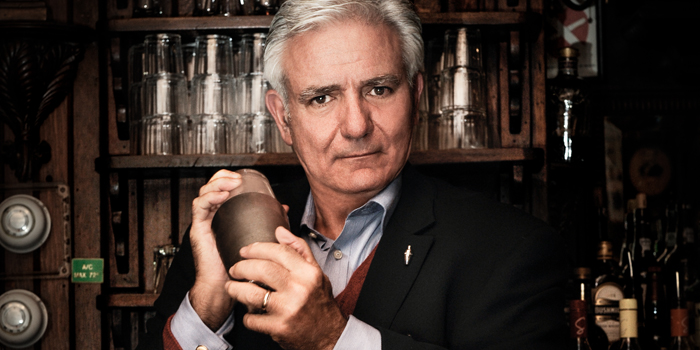
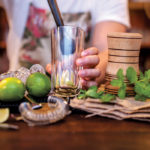
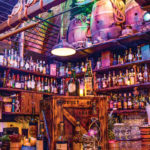


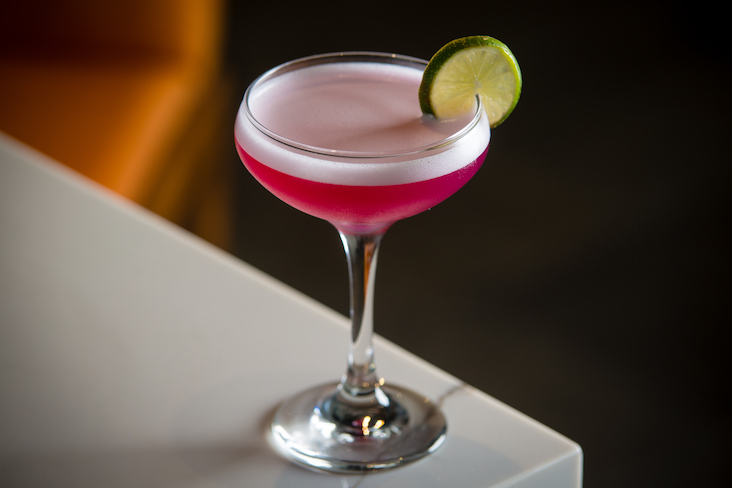
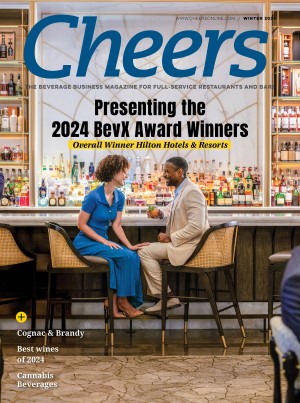


This list is ridiculous. Where is Sasha Petraske. Just insulting.
Petraske is obviously on this list under the ‘Goes Without Saying…’ category.